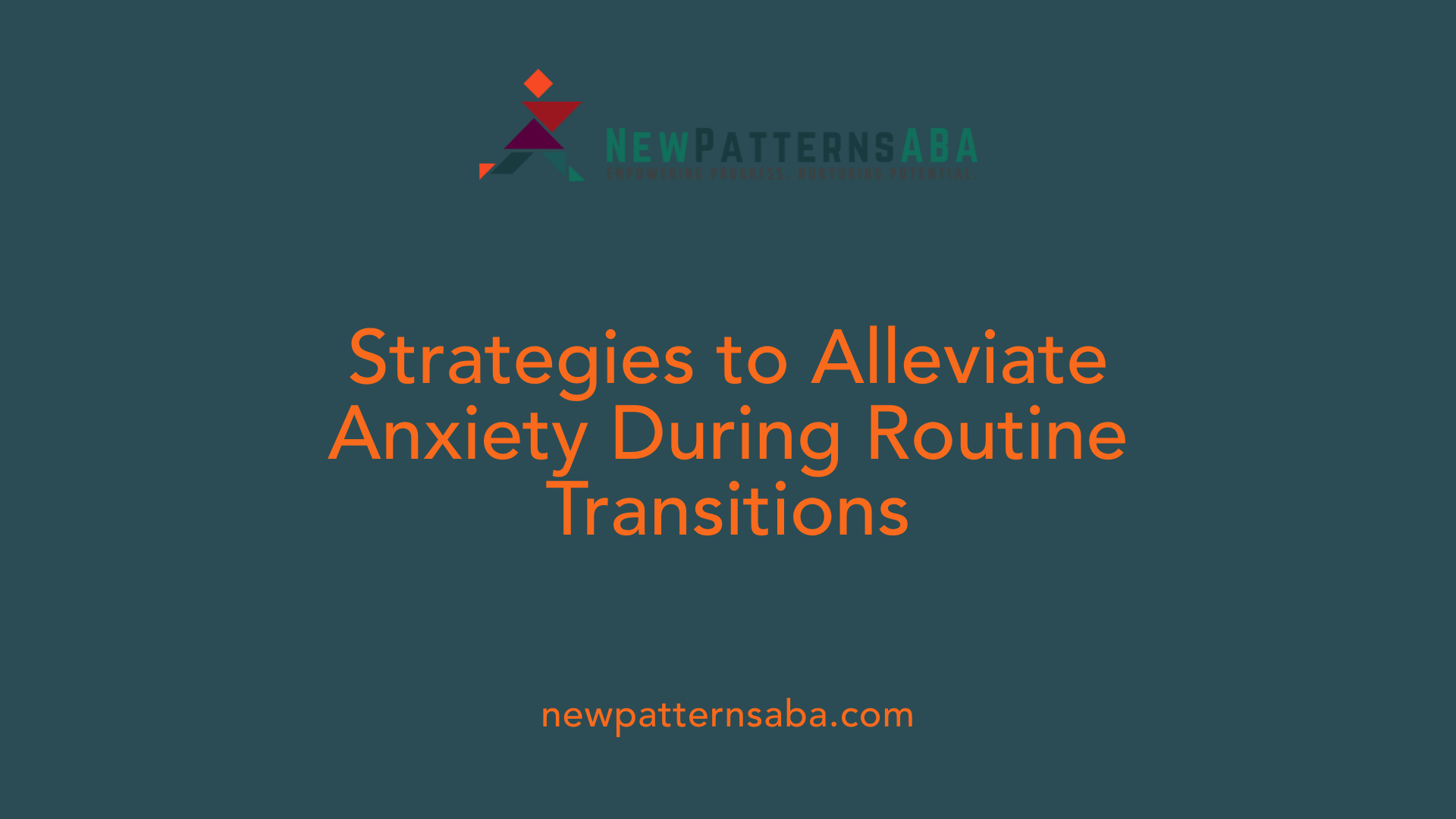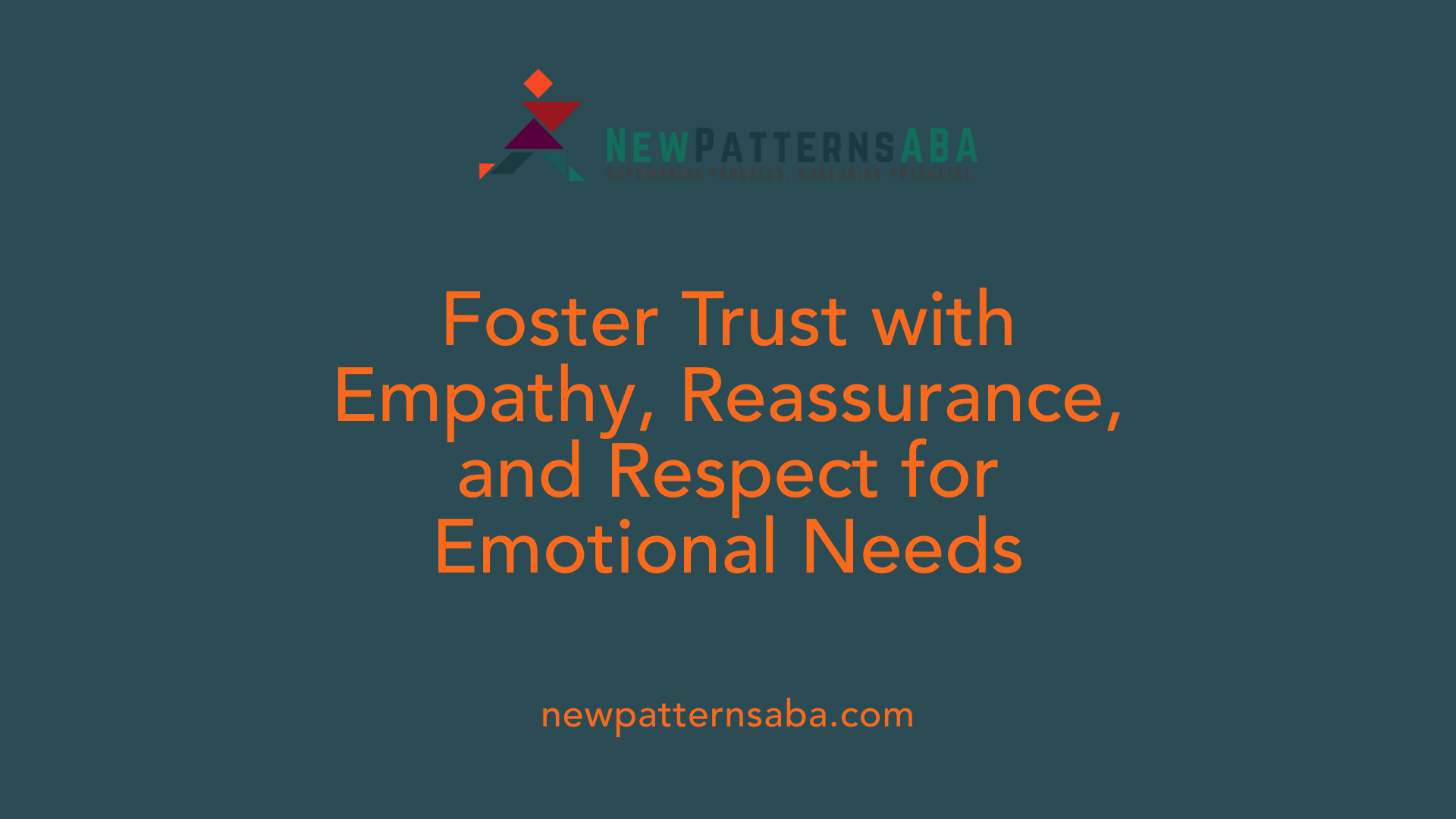Navigating Life's Unpredictable Moments: Strategies for Autism Support
Understanding the Significance of Routine and Flexibility in Autism Daily Life
For individuals with autism, routines and predictability serve as vital anchors that promote safety, reduce anxiety, and enable effective self-regulation. However, life's inherent uncertainties often impose situations requiring adaptation. This article explores practical strategies and empathetic approaches to manage unexpected changes, support transitions, and address challenges such as shutdowns, to foster resilience and well-being among autistic individuals.
The Importance of Routine and Predictability in Autism
Why are predictability and routines important for individuals with autism?
For children and adults with autism, routines and predictability play a vital role in their daily lives. These structures act as anchors, providing a sense of safety and stability amidst the often unpredictable world around them.
Predictable routines help reduce anxiety by making daily activities and transitions less stressful. When individuals know what to expect, they experience less emotional distress, which can prevent meltdowns and problematic behaviors.
Structured environments tailored to personal interests, along with visual supports like schedules or picture cards, enhance understanding and communication. This familiarity fosters independence and social skills over time.
Moreover, routines help manage energy levels effectively. By knowing the sequence of activities, autistic individuals can conserve mental and emotional energy, reducing feelings of overwhelm.
Creating a consistent daily pattern supports emotional growth and self-regulation. It also encourages positive behaviors and coping strategies during change.
For families, establishing predictable routines decreases daily stress, strengthens bonds, and makes managing challenging behaviors easier. Overall, routines are a cornerstone of a supportive environment that promotes well-being and development for those with autism.
The Power of Visual Supports in Managing Routine Changes
What are effective approaches to help autistic individuals cope with routine disruptions?
Autistic children often find comfort in predictability and routine, and unexpected changes can cause stress and anxiety. To support them effectively, the use of visual supports plays a crucial role.
Visual supports include tools like daily schedules, timers, picture cards, and social stories. These resources help children understand their daily routines and upcoming changes, reducing uncertainty and distress.
Creating visual schedules with clear symbols or photographs outlining daily activities helps children follow routines consistently. When a change occurs — such as a new activity or an appointment — visual cues like timers, countdown charts, or picture cards about upcoming events prepare them ahead of time, making transitions smoother.
Gradually introducing small changes through visual supports fosters flexibility. For example, practicing a new routine step-by-step and using positive reinforcement encourages resilience. Exposing children to new experiences in a controlled, predictable manner builds their confidence and adaptability.
Involving children in decision-making or providing them with visual choices can further lessen anxiety. Explaining changes visually and giving advance warnings help them anticipate and prepare for adjustments.
Additionally, employing calming techniques such as deep breathing, sensory tools, or listening to soothing music can aid children during transitional periods. Creating backup plans and visual cues for unexpected changes, like surprise icons or picture cards, help them understand and accept disruptions.
Supportive strategies also include maintaining familiar routines as much as possible and establishing personalized transition plans. When used together, these methods create a structured, reassuring environment that minimizes stress and promotes emotional stability.
In summary, utilizing visual supports effectively prepares autistic individuals for routine changes, enhances their understanding, and fosters resilience in navigating daily life’s unpredictability.
Caregiver and Educator Strategies for Transition Support
How can caregivers and educators support autistic individuals during transitions and routine changes?
Supporting children and adults with autism during changes in routine involves careful planning, patience, and consistent methods. One of the most effective tools is the use of visual supports. Visual schedules, timers, countdown charts, and transition cards help create a clear, predictable sequence of events. These visuals prepare individuals ahead of time, reducing confusion and anxiety.
In addition to schedules, social stories are valuable. They are short, illustrated narratives that explain upcoming activities, such as visiting the dentist or moving to a new classroom. These stories help set expectations and demystify unfamiliar situations.
Involving individuals in the planning process enhances their sense of control. Giving choices about activities or sequences during transitions can reduce resistance and frustration. For example, allowing a child to choose which transition object to use or which route to take makes the experience more empowering.
Practicing transitions in different settings or days beforehand can make the actual change less stressful. Reinforcing positive experiences before and after transitions encourages adaptability.
Using auditory cues like timers or bells can also prepare children for upcoming changes. Having a 'finished' box or a designated item signals the end of an activity, helping to cue the transition.
Combining these strategies—visual supports, social stories, involving the individual in decision-making, and practicing—builds resilience and autonomy. As a result, children and adults with autism tend to handle transitions better, with fewer behaviors related to anxiety or overwhelm and a greater sense of security.
Managing Anxiety During Routine Changes

How can one manage anxiety related to unexpected changes in the routines of autistic individuals?
Autistic children often rely heavily on routines and predictability as a source of comfort and control. Any unexpected change can trigger stress, withdrawal, or even aggressive behaviors as responses to anxiety. To address this, preparation plays a crucial role.
Using visual supports such as social stories, picture cards, and visual schedules helps children understand upcoming events ahead of time. These tools provide a clear picture of what to expect, reducing the uncertainty that fuels anxiety. Maintaining a consistent daily routine as much as possible also helps children feel secure.
When changes are unavoidable, giving extra transition time is beneficial. Providing calm reassurance and using sensory tools such as noise-canceling headphones or soothing objects can help children manage their emotional responses. Validating their feelings creates a safe space for expression.
Practicing transitions through rehearsals of new activities or visits to new locations beforehand can reduce fear of the unknown. Breaking down changes into smaller, manageable steps supports gradual adaptation.
Incorporating individualized strategies like cognitive-behavioral techniques, sensory engagement, and involving support teams can further assist children in developing coping skills. By doing so, caregivers and educators empower children to handle disruptions with more confidence and less distress.
| Strategy | Description | Additional Tips |
|---|---|---|
| Visual Supports | Use social stories, picture cards, and schedules | Update visuals regularly to reflect changes |
| Transition Time | Allow extra time for adjustments | Use timers or countdown charts for predictability |
| Gradual Flexibility | Introduce small changes gradually | Practice routines with slight modifications over time |
| Rehearsal & Practice | Visit new locations or simulate activities | Use videos and role-playing to familiarize |
| Positive Reinforcement | Encourage flexible behaviors | Celebrate small successes to build resilience |
Managing anxiety during routine changes involves a combination of preparation, patience, and personalized strategies. With a proactive approach, autistic individuals can better navigate transitions, feeling more secure and less overwhelmed.
Recognizing and Responding to Autistic Shutdowns

What are common signs of shutdowns in autistic individuals, and how should they be responded to in daily life?
Autistic shutdowns are responses to sensory or emotional overload and can be identified through a range of observable signs. Common indicators include withdrawal from surroundings, unresponsiveness, and reduced movement or stillness. Individuals might have difficulty speaking or communicating, appearing emotionally numb or dissociated. Increased stimming behaviors, physical signs like fatigue, or temperature regulation issues can also point to a shutdown.
They may seek out calm environments, hide, or avoid eye contact, signals that they are overwhelmed and need space. Recognizing these signs early is crucial for providing effective support.
Support strategies involve creating a safe, quiet space where the individual can retreat. Reducing sensory input—such as dimming lights, lowering noise levels, or minimizing tactile stimuli—helps calm the overwhelmed system. Offering reassurance without demanding communication allows the person to regain composure on their own terms.
Patience and respect are vital. Avoid pressuring the individual to engage or explain, as this can heighten stress. Instead, use calm language and provide physical comfort if appropriate. Developing personalized plans to manage common triggers and establish predictable routines can prevent future shutdowns and foster a sense of safety.
In daily routines, supervisors or caregivers should stay observant for early signs of overload, intervene proactively, and support recovery empathetically. These practices help not only in managing shutdown episodes but also in creating a nurturing environment that respects sensory sensitivities and promotes emotional well-being.
Understanding the Role of Sensory Overload and Overactivity
How can understanding and responding to autistic shutdowns improve daily life for autistic individuals?
Autistic shutdowns are involuntary responses to overwhelming sensory or emotional input. Recognizing and understanding these episodes can make a significant difference in daily life by helping caregivers and individuals avoid escalation and reduce distress.
When early signs such as confusion, fatigue, or irritability are identified, proactive steps can be taken. Creating calming environments, providing sensory tools, and allowing space for recovery can help the person re-regulate more quickly.
Supporting autistic individuals with patience, empathy, and respect during shutdowns fosters a sense of safety. Developing personalized plans that include strategies for managing triggers like sensory overload or sudden changes helps individuals feel more in control.
This awareness encourages a more inclusive environment, where stress is minimized, and well-being is prioritized. In turn, this can lead to improved daily functioning, reduced anxiety, and greater independence.
Sensory triggers: sounds, lights, touch, smells
Autistic individuals often experience heightened sensitivity to sensory stimuli. Common triggers include loud noises, bright lights, unexpected touches, and strong smells. These inputs can quickly lead to sensory overload, overwhelming their brain’s ability to process information effectively.
Impact of overload on shutdowns and meltdowns
Sensory overload can precipitate shutdowns, where the person withdraws or becomes unresponsive, serving as a protective mechanism. Unlike meltdowns, which are sometimes visible and intense, shutdowns are often quieter but equally exhausting. Both responses aim to prevent emotional or physical exhaustion but require different strategies for support.
Strategies to reduce sensory overload: quiet spaces, sensory tools
Minimizing sensory input begins with providing a calm, quiet space where the individual can retreat when feeling overwhelmed. Equipping this space with sensory tools like noise-canceling headphones, soft lighting, or textured objects allows the person to self-soothe.
Planning outings by checking websites, using visual schedules, and preparing sensory accommodations in advance can also help manage exposure to sensory triggers. Recognizing the signs of overload and intervening early can prevent shutdowns or meltdowns, making daily life more manageable.
| Sensory Trigger | Examples | Support Strategies |
|---|---|---|
| Sounds | Loud noises, sirens | Use noise-canceling headphones, create quiet zones |
| Lights | Bright fluorescent lights | Use dim lighting, sunglasses, or visual filters |
| Touch | Unexpected touches, textures | Offer personal space, soft clothing, tactile toys |
| Smells | Strong perfumes, chemicals | Minimize exposure, use scent-free products |
The Benefits of Gradual Change and Exposure
Gradually Introducing Physical Modifications and Routines
One effective approach to helping children with autism adapt to change is to introduce modifications gradually. Physical changes, such as rearranging furniture or trying new activities, are less overwhelming when introduced step-by-step. For example, shifting a favorite seat slightly each day or changing the order of a daily task over time helps children become comfortable with new routines without facing sudden disruptions. Using visual supports like picture cards or timers to signal upcoming changes can prepare children and reduce anxiety.
Rehearsing Changes in Familiar Settings
Practicing new experiences within familiar environments can ease the transition to unfamiliar settings. Visiting a new school or location beforehand, or taking practice drives to a park or store, allows children to familiarize themselves with the environment. Creating short videos with narration of the new activity or location adds another layer of familiarity. This preparation helps children build confidence and understand what to expect, which can significantly lower stress levels during the actual event.
Building Flexibility Through Positive Reinforcement
Encouraging flexibility is crucial for managing routines and adapting to change. When children successfully engage in a new activity or accept a routine variation, providing positive reinforcement encourages them to stay open to future changes. Incorporating preferred items or activities into routines can motivate children to be more adaptable. Over time, this consistent reinforcement helps build resilience, making it easier for children to handle unexpected changes without distress.
| Strategy | Description | Benefits |
|---|---|---|
| Gradual Modifications | Introduce physical and routine changes slowly | Reduces stress, builds comfort |
| Rehearsals | Practice visits and scenarios beforehand | Increases familiarity and confidence |
| Positive Reinforcement | Reward flexibility and acceptance | Encourages future adaptability |
Implementing these strategies fosters a supportive environment where children with autism learn to respond adaptively to change, promoting emotional well-being and independence.
Personalized Strategies and the Power of Patience

Tailoring routines and supports to individual needs
Every child with autism is unique, and their routines and supports should reflect their personal preferences and sensitivities. While routines provide comfort and predictability, some children may develop rigid behaviors that cause distress.
Creating personalized routines involves involving the child in planning and considering their favorite items, preferred activities, and specific triggers for anxiety. For example, a child might prefer a specific route to school, favorite snacks, or familiar clothing.
Customizing activities, visual supports, and even the timing of routines ensures that support strategies are effective. Engaging the child in choices and gradually introducing small changes can also help build their flexibility over time.
Using personalized visual schedules and cues
Visual supports are powerful tools for children with autism, especially when tailored to their understanding levels and interests. Personalized visual schedules can include a mix of photographs, symbols, or videos depicting daily activities.
Including the child's favorite characters or images makes schedules more engaging and relevant. Transition cues like timers or countdown charts, customized with visual cues, prepare children for upcoming changes.
Additionally, personalized picture cards indicating feelings or needs can provide children with nonverbal ways to express themselves, supporting communication during routines or changes.
The importance of patience and empathy in supporting change
Supporting children with autism through changes requires patience and empathy. Recognizing that routines are a source of safety and that deviations can cause increased anxiety helps caregivers respond more compassionately.
Offering calm reassurance, validating feelings, and providing explanations—preferably visual—can ease anxiety. It’s essential to give children extra time to process changes and avoid rushing them.
Empathy involves understanding that behavior such as withdrawal or irritability is often a response to overwhelm, not defiance. By maintaining a calm demeanor, staying predictable, and offering gentle redirection, caregivers can help children feel secure.
Overall, personalized strategies combined with patience create a supportive environment where children with autism can navigate routines and changes more confidently, fostering their independence and well-being.
Building a Supportive Environment for Successful Adaptation

Creating calm, sensory-friendly spaces
A calming environment is essential for individuals with autism, especially when they face unexpected changes or sensory overload. Designing spaces with minimal noise, soft lighting, and comforting textures can help reduce stress. Including items such as noise-canceling headphones, weighted blankets, or sensory toys provides additional comfort. These environments serve as safe zones where individuals can regulate their emotions and recover from overstimulation.
Engaging community resources and networks
Community support plays a vital role in helping autistic individuals manage transitions and unpredictable situations. Support networks, including local autism groups, therapy services, and social organizations, offer valuable advice, practical assistance, and social opportunities. Community resources such as specialized programs and events help foster a sense of belonging and provide opportunities to practice flexibility in a controlled setting.
Encouraging autonomy and decision-making
Empowering autistic individuals to make choices about their routines and activities promotes independence and reduces anxiety. Using visual supports like picture choices or timers helps them understand options and increases their comfort with transition processes. Involving them in planning and decision-making—such as picking activities or selecting preferred spaces—builds confidence and a sense of control, which is especially important during routines or sudden changes.
| Strategies | Description | Benefits |
|---|---|---|
| Visual supports | Use visual schedules, picture cards, and timers | Enhances understanding, reduces stress |
| Safe and calming spaces | Designate sensory-friendly zones in homes or schools | Encourages emotional regulation |
| Community involvement | Leverage local autism groups and support services | Promotes social connection and shared experiences |
| Choice and participation | Allow choices in daily routines and activities | Builds independence and coping skills |
Empathy and Patience as Foundations for Support

Respecting individual responses to change
Children with autism often find comfort in routines and predictability. When routines are disrupted, they may respond with stress, withdrawal, or behaviors such as tantrums or aggression, which are signals of their anxiety or communication difficulties. Recognizing the importance of respecting each child's unique way of responding to change is vital. Observing signs of distress and responding calmly helps prevent escalation and reassures the child that they are supported.
Providing reassurance and validation
Using visual supports like social stories, picture cards, or visual timers can help children understand upcoming changes and feel more in control. Validating their feelings by acknowledging their fears or concerns fosters trust and reduces anxiety. For example, saying, "I see you're worried about going to the new place, but we will do it together," provides reassurance. Consistent, calm communication that reassures children supports emotional stability and encourages cooperation.
Supporting recovery and emotional well-being
Autistic shutdowns are responses to sensory or emotional overload, often requiring patience and understanding from caregivers. Recognizing early indicators of shutdowns, such as fatigue or dissociation, allows for timely intervention. Creating a calm, safe environment, respecting personal space, and offering comforting strategies like deep breathing or sensory tools can facilitate recovery. Developing personalized shutdown plans helps in managing triggers and ensures the child feels secure. Supporting their emotional well-being through a compassionate approach helps them regain control, reduces distress, and promotes resilience.
| Strategy | Purpose | Implementation Example |
|---|---|---|
| Visual supports | Reduce anxiety by clarifying routines and changes | Using picture schedules and social stories |
| Reassurance and validation | Foster trust and emotional security | Using calm language and acknowledging feelings |
| Calming environment | Ease emotional overload and support shutdown recovery | Creating a quiet space with preferred calming items |
| Personalized shutdown plan | Prepare for and manage shutdown episodes | Identifying early signs and establishing support strategies |
| Patience and empathy | Build trust and promote emotional health | Offering space and support during episodes |
Supporting individuals with autism requires a thoughtful combination of understanding their emotional and sensory needs, respecting their responses, and providing supportive interventions. Through patience, reassurance, and tailored strategies, we create a nurturing environment where children and adults on the spectrum can navigate change more successfully and maintain their emotional health.
Empowering Through Knowledge and Compassion
Supporting autistic individuals through life's unpredictable moments requires a blend of practical strategies, visual supports, and heartfelt empathy. Recognizing the importance of predictability, gradually introducing change, and respecting personal boundaries build trust and resilience. Caregivers and educators play a vital role in preparing individuals ahead of transitions, using visual aids, social stories, and reassurance to ease anxiety. Equally important is understanding and responding to shutdowns with patience and empathy, creating calm environments that foster recovery and emotional safety. By fostering a supportive, adaptable environment, we enable autistic individuals to navigate unexpected changes with confidence, promoting their independence, well-being, and quality of life.
References
- Autism and Dealing with Change
- Preference for order, predictability or routine
- Coping with Changes in Routines
- 20 Autism Transition Strategies For Adults To Ease ...
- All About Autistic Shutdowns: A Guide for Allies
- Autism, Routine & Meltdowns: How to Help Kids Cope with ...
- Here's Why an Autism Routine is Important
- Preference for order, predictability or routine
- Rules and Routines
- 12 Benefits of Predictable Routines for Kids with Autism






